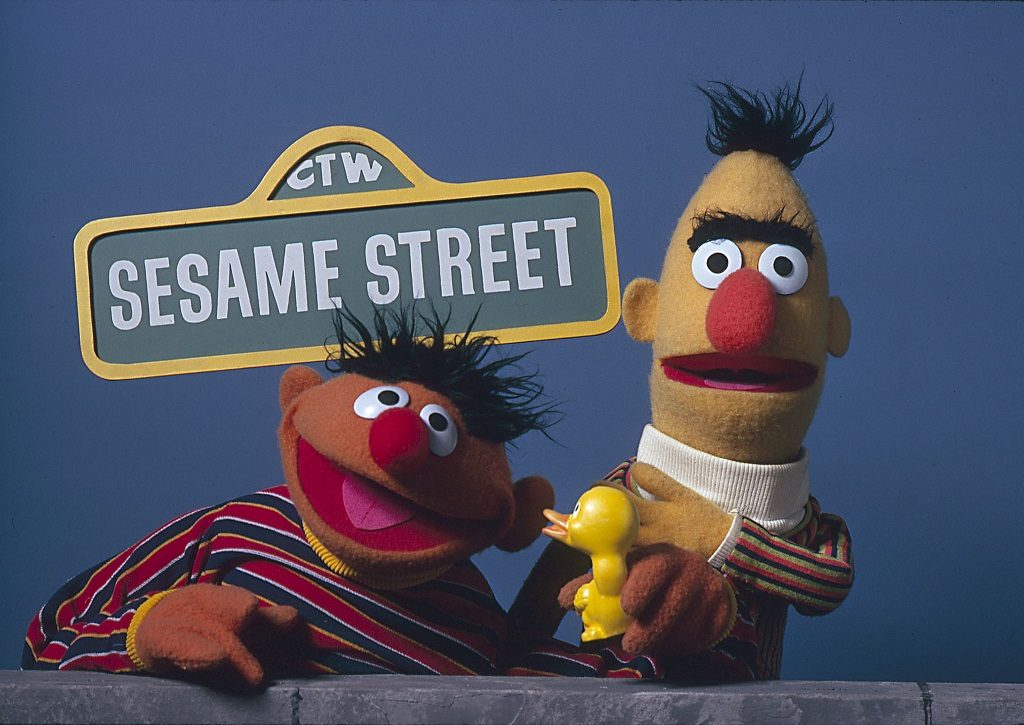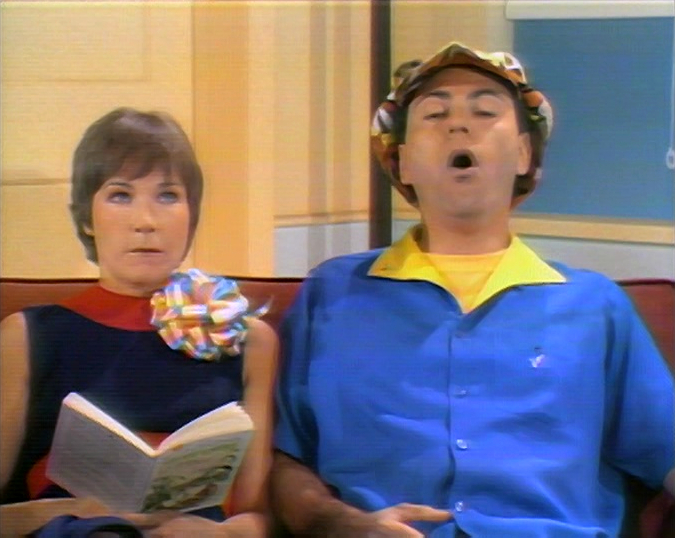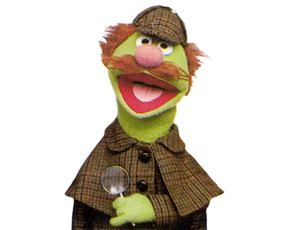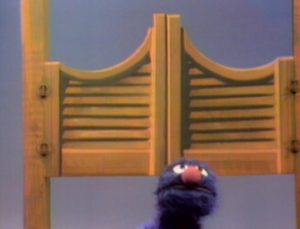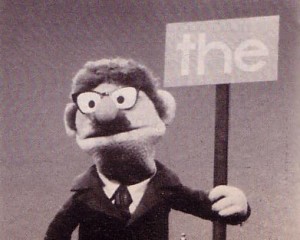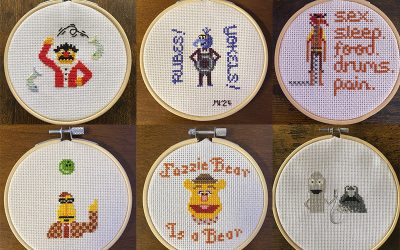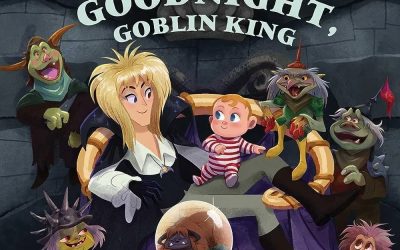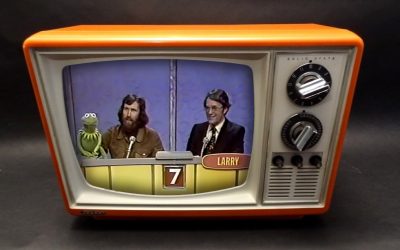Season 2 (November 9, 1970 – May 28, 1971)
Sesame Street was a pretty big hit right away. It’s really obvious to say this, but it changed children’s television forever. Over the course of the first season, the producers gradually got the hang of things, and ended up with a consistently good, educational show that was also popular with viewers of all ages.
So what do you do when you’ve figured out how to make the best children’s television program ever produced? A lesser group of creative geniuses would just keep on doing the same thing. But not the Sesame Street folks. No, when it came time to create season two, which aired in 1970-71, they took their great show and tried to make it even better.
There was one thing everyone working on the show knew had to be changed, to ensure that America’s preschoolers would reap the maximum educational benefits from the program. That thing, of course, was orange Oscar the Grouch. Exhaustively researched studies showed that kids would learn 37% more effectively from a green grouch than an orange one, so Oscar went on vacation to Swamp Mushy Muddy and came back the color of algae, slime, and cucumbers. This proved to be an excellent decision, as evidenced by the fact that to this day, we Muppet geeks love showing off how smart we are by asking people “Hey, did you know Oscar the Grouch used to be orange?”
Then there was the season one comedy team of Buddy & Jim. Foregoing the “one smart one, one dumb one” standard, Buddy and Jim were both dumb, except Jim thought he was the smart one. When season two rolled around, they had been replaced by Larry & Phyllis, played by then-married couple Alan Arkin and Barbara Dana.
Yes, future Academy Award winner, Muppet Show guest star and future Muppets Most Wanted cameo star Alan Arkin! And actress/author/playwright Barbara Dana! Only one Larry & Phyllis sketch has been officially released, on the Old School DVD set, but it provides a glimpse at an agreeably eccentric duo who learn to solve their problems with cooperation. That’s a good lesson! They were fun characters, less exasperating than Buddy & Jim, and it’s too bad they didn’t stick around more than one season.
(Also, the first time I saw that sketch, I very nearly physically fell off the couch from laughing at the part where the couple desperately tries to remember the word “cooperate.”)
And speaking of people, season 2 was the season of human cast member Miguel. Millions of fans remember learning how to say “adios” and “agua” from Maria and Luis, but alas, Sesame Street’s very first Latino character has been lost to history. I can’t find any clips of Miguel on YouTube right now, but as I recall from what I’ve seen, he didn’t quite have the charismatic screen presence of Maria and Luis.
Overall, the second season found the show perfecting everything they had already been doing pretty well. The Muppets’ personalities are developed, the insert segments are just the right length, and the curriculum has been expanded to cover new topics. If season one of Sesame Street was like the first pancake to come off the griddle — a little bit undercooked, a little bit misshapen — season two is a nice, round, evenly cooked pancake. They’ve perfected their technique, and created the pancake that so many of us remember watching on PBS (the Pancake Broadcasting Service).
Notable Character Debut: Miguel’s first and only season was also the first season for Tom, a fellow who worked at Hooper’s Store and would hang on for one more season. And David, who would go on to become one of the all-time beloved human characters. On the Muppet side, there were the debuts of Herry Monster, Prairie Dawn, Simon Soundman, and of course, the world’s greatest detective Sherlock Hemlock.
Notable Character Departure: Kermit the Frog?! It’s true! Kermit had appeared in the first season, but Jim Henson was concerned about using the character to help kids learn while he was also appearing in more commercial projects. Thus, the dynamic, funny, expressive frog ceased appearing in new segments and was replaced by… Herbert Birdsfoot, a button-downed dweeb who looked like my elementary school principal Mr. Pevoto! Long story short, Herb didn’t quite work out, and Kermit returned to the street.
MVM (Most Valuable Muppet): Grover existed in the first season, but as I understand it, he really became the Grover we know and love around this time. This is also when he follows up the original “Near and Far” sketch with the song “Over, Under, Around and Through.”
MVE (Most Valuable Episode): This season has the episode where Oscar gets his pet worm, Slimey. That’s pretty valuable.
Notable Episodes: As described on Muppet Wiki, episode 138 sounds fascinating. The street story is “Who owns the garage?”, and it’s about Gordon and Mr. Hooper arguing over which of them owns the deed to the garage in the arbor. Property law! Now THAT’S what I want to see more of on Sesame Street!
Classic Sketch Debut: Still too many to count at this point. Bert and Ernie sketches, Guy Smiley game shows, Grover bits, Cookie Monster antics. Oh, and the King of Eight! It doesn’t get more classic than that.
Classic Song Debut: Among others, “Everyone Makes Mistakes,” Big Bird’s ode to screw-ups. The sentiment is a good thing to think about when you spill milk, or forget a doctor’s appointment, or crash your zamboni into a greenhouse.
Curriculum Focus: Among other things, the curriculum now teaches kids to count all the way up to TWENTY. This was super-useful for little tykes who needed to count the number of proteinogenic amino acids that are encoded by the standard genetic code.
Best Celebrity Moment: The cast of Bonanza says the alphabet. Bonanza feels like a show from a thousand years ago, and yet it was on at the same time as Sesame Street, and Sesame Street is still on the air. Hoss almost forgets the letter Z, which would have been super-embarrassing, but fortunately his horse reminds him.
One More Thing: A fascinating note about the set: The street itself went in a straight line in the first season. Starting in season two, it curves. This probably makes it look less like a real New York City street, but it’s more visually interesting. From now on, Big Bird can look to see whether Hooper’s is open without even having to turn his head all the way!
Click here to solve your problems with cooperation on the Tough Pigs forum!
by Ryan Roe – Ryan@ToughPigs.com

